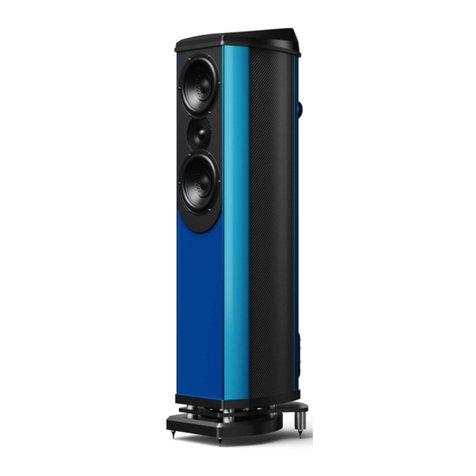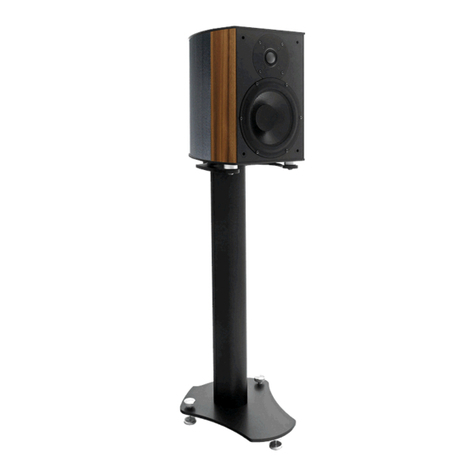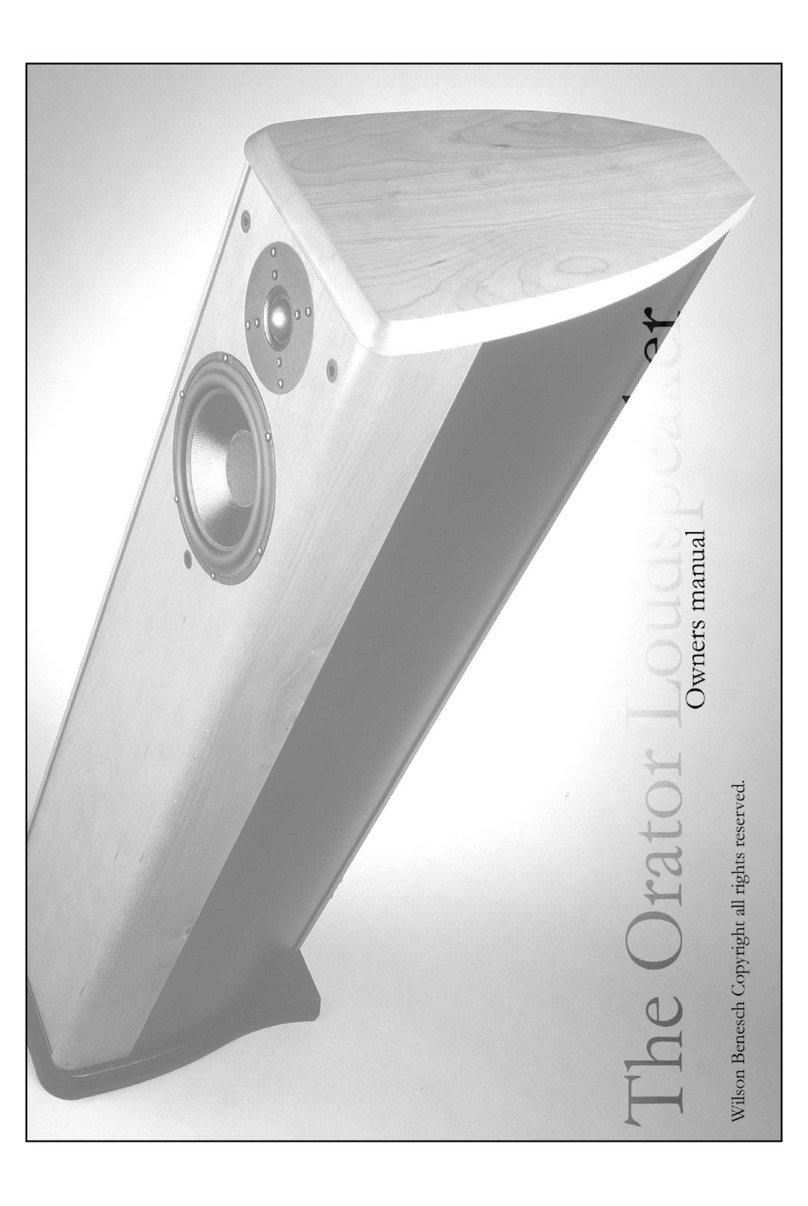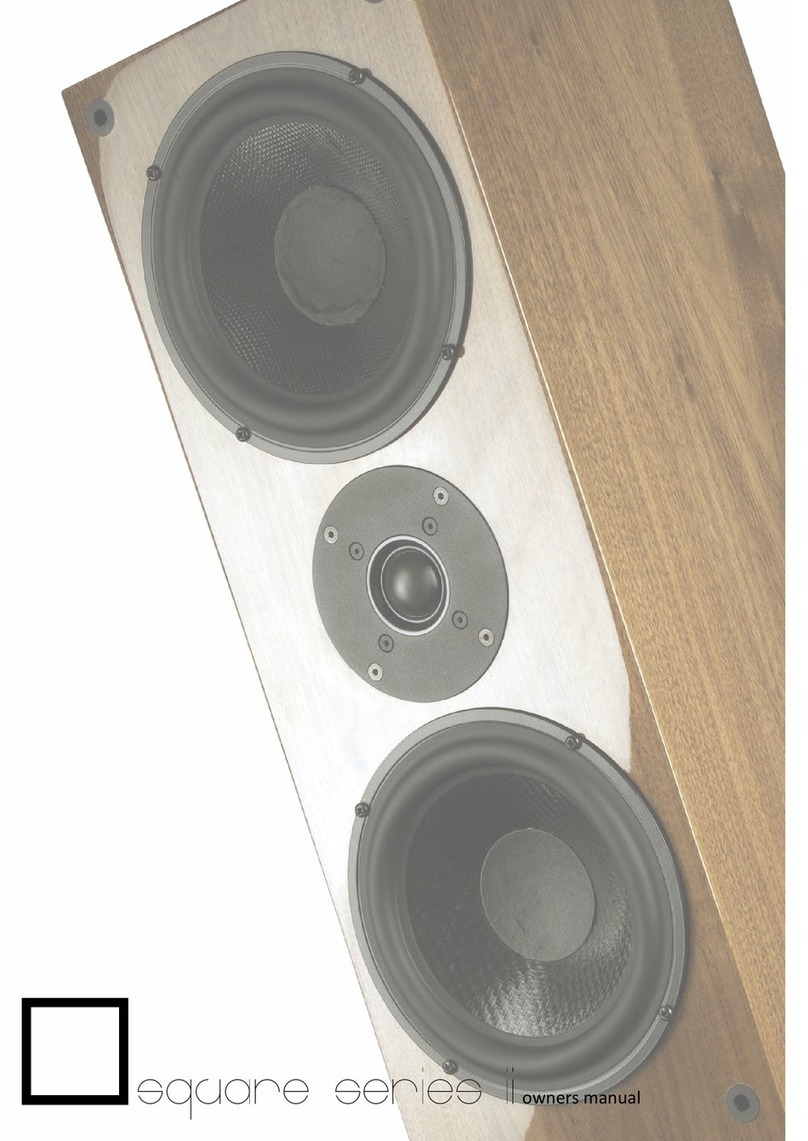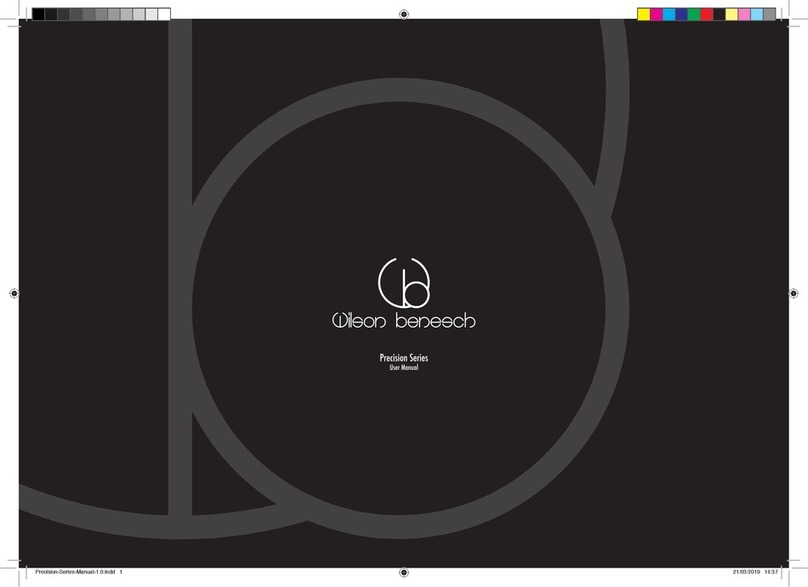Terminals
PRECAUTION: DO NOT OVER STRAIN THE TERMINAL WHEN CLAMPING
CABLES.
(Wilson Benesch recommend 8mm Rin Connector cable terminations)
The Terminals have a crucial role to play which must be executed reliably over lon
periods of time. Wilson Benesch terminals are a piece of industrial desi n. Their ele ance
is born of simplicity and they achieve their purpose without compromise. They were
desi ned by Wilson Benesch in order to achieve the level of performance required by the
advanced desi n of which they form an important part. They provide the shortest
possible route for the si nal and in this aspect they out perform all other terminals
currently available. They are turned from a sin le bar of hi h purity copper alloy and
exploit the common nut to ensure a reliable, vibration free termination of the cable to a
massive surface area, old plated of course. Exploit ood quality 8mm diameter rin
connectors and you will achieve the best possible link. You can be sure that this
inexpensive nut will be just as ti ht today as it will tomorrow or the next year, and once
locked you can for et about it. An out of si ht, peace of mind cable terminations. A
spanner is provided to nip up the old plated brass nuts but be careful; copper is a soft
material.
Banana plu s can also be used, however, the quality of connection achieved with a
banana plu will always be inferior to that of a correctly clamped rin terminal. A plate is
provided for use with less than tri - wirin . This plate can also facilitate sin le or bi-
wirin accordin to how it is used. It should be clamped between the terminals and the
nuts when in use.
Running In
Like anythin of ood quality, a period of runnin in tends to see improvements in
performance. The speaker cabinet requires time to settle in to its surroundin s. Climatic
variations and humidity will take time to adjust to, and until such adjustments have been
made the speaker will not perform at its best. The drivers require time to bed in
physically and relax materially. The carbon panels actually improve in structural inte rity
as they a e. The quality of the sound that you hear when you first use your A.C.T. Ones
will improve quite si nificantly over time thou h the chan e will not be instantly
perceptible.
Surface Finish
Carbon fibre is a unique material with unusual physical and visual characteristics. We like
to remain truthful about the fibrous nature of the material as opposed to concealin or
obscurin it. It should be appreciated that whilst we take every effort to produce
absolutely perfect panels, the occurrence of sli ht distortions in the fabric is inevitable.
This phenomenon is virtually impossible to control and is a natural characteristic of the
material.
The natural wood components are manufactured from solid wood. They will darken over
time and dependin on the climatic and heatin conditions will stress relieve. This is a
natural phenomenon that may cause sli ht chan es in the dimensions of the wood. These
are typically imperceptible.
